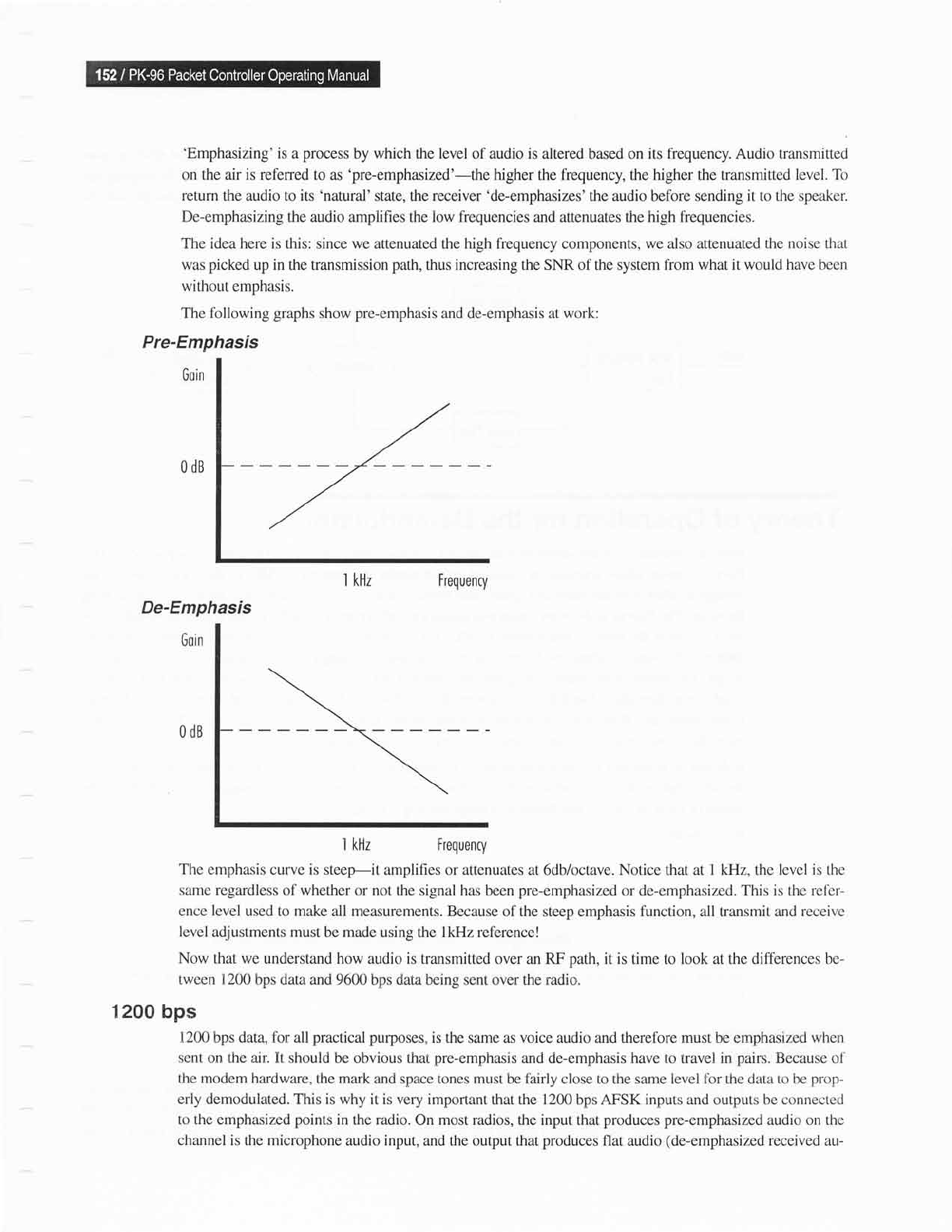Specifications
Table Of Contents

'Emphasizing'
is
a
process
by
which
the level of audio is altered based on its frequency. Audio transmitted
on
the air is refened
to as
'pre-emphasized'-the
higher the frequency, the higher the transmitted
level. To
retum the audio to its
'natural'state,
the
receiver 'de-emphasizes'the
audio before sending it to the
speaker.
De-emphasizing
the audio amplifies the low frequencies and
attenuates
the high frequencies.
The
idea
here is this: since
we
attenuated the high frequency components, we also attenuated the
noise
that
was
picked
up in the transmission
path,
thus increasing the SNR of the system fiom what it
would have been
without emphasis.
The
following
graphs
show
pre-emphasis
and de-emphasis at
work:
Pre-Emphasis
Frequency
De-Emphasis
I kHz Frequency
The
emphasis curve is steep-it
amplifies or attenuates at 6db/octave. Notice that at 1 kHz, the
level is the
same regardless
of
whether
or not the signal has been
pre-emphasized
or de-emphasized.
This is the ref'er-
ence level used
to make all measurements. Because
of
the
steep emphasis
function,
all transmit and
receive
level
adjustments must be made
using the
lkHz
reference!
Now
that we understand how audio is transmitted
over an RF
path,
it is time to look at the dift'erences
be-
tween I 200
bps data and 9600 bps data being sent over the radio.
1200
bps
1200
bps data, for all
practical purposes,
is the same as voice audio and therefore must be emphasized
when
sent on the air.
It should be obvious that pre-emphasis
and de-emphasis have to travel in
pairs. Because
of
the modem hardware,
the mark and space tones must be fairly
close to the same level
for
the data
to be
prop-
erly demodulated.
This is why it is very important
that the
1200
bps
AFSK inputs
and outputs be
connected
to the emphasized
points
in
the radio. On most radios, the input
that
produces pre-emphasized
audio
on the
channel is
the microphone audio input, and the
output that
produces
flat audio
(de-emphasized
received
au-
Goin
Goin










